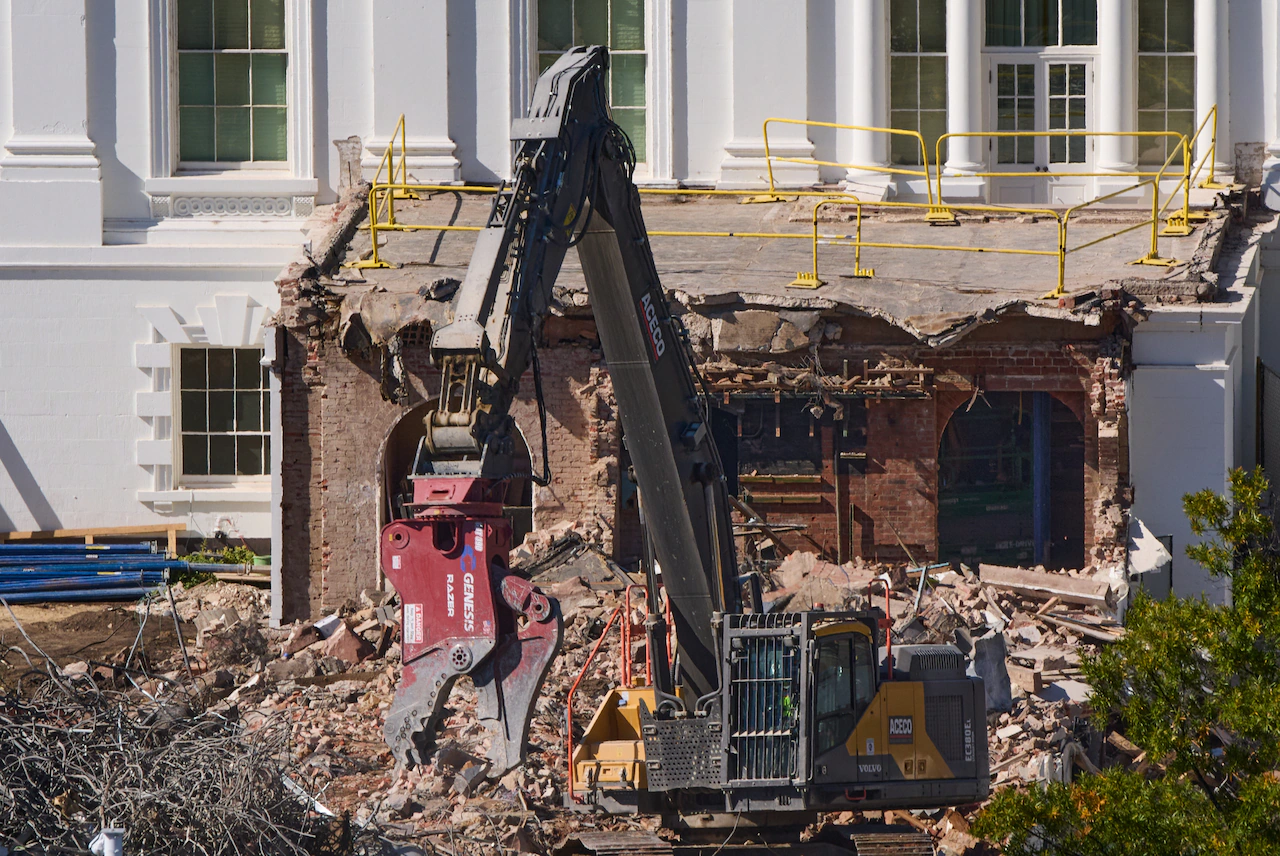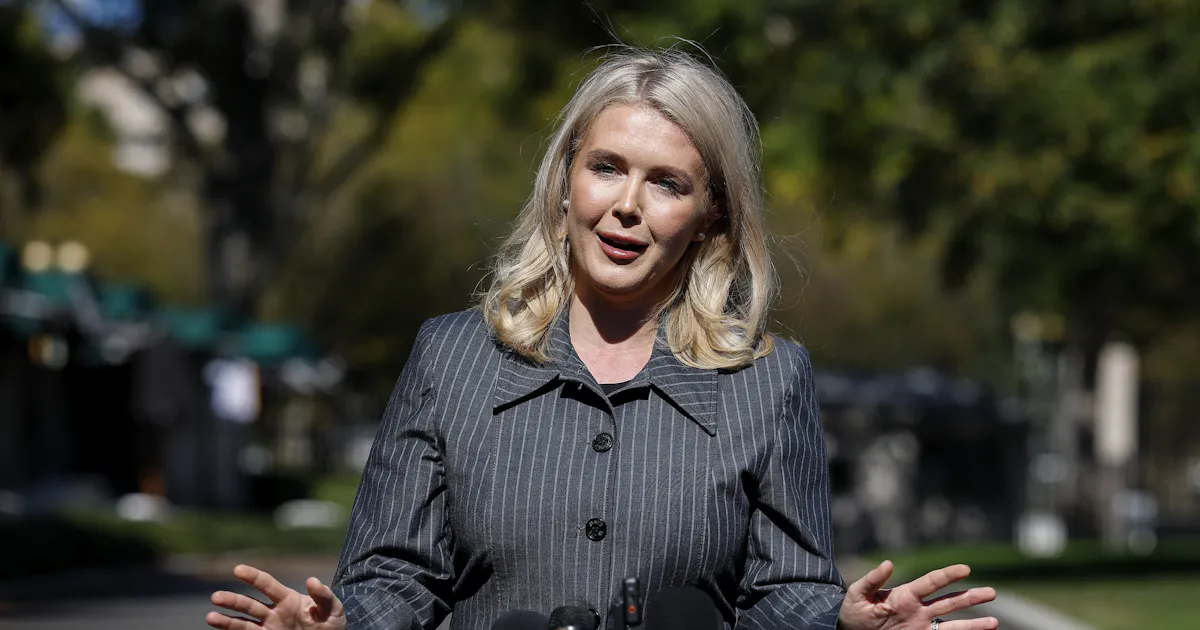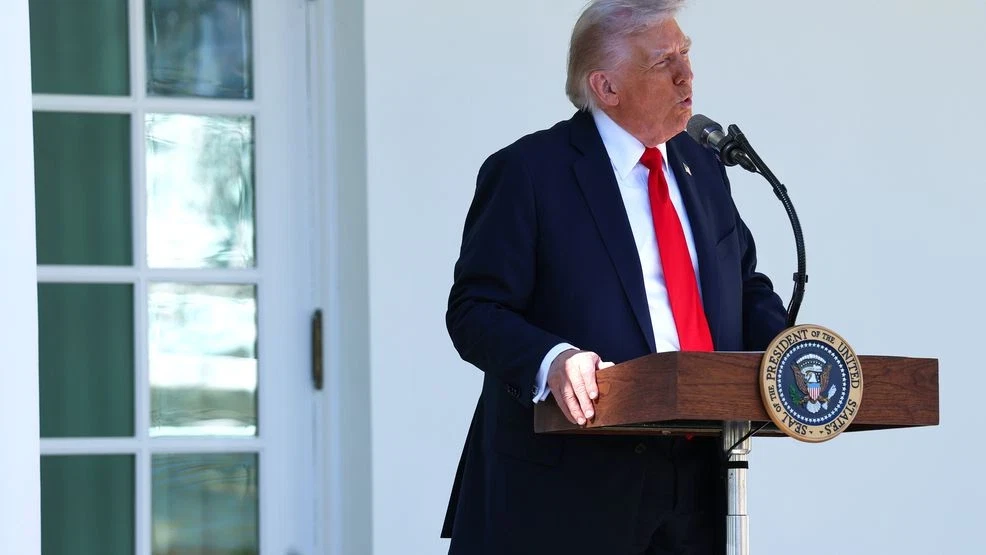Copyright syracuse.com

Ed Griffin-Nolan, a writer who lives in Pompey, is a former independent journalist and small-business owner. I know it was a sad sight to behold all that excavation equipment leaving the now diminished White House. For me, it was a pity, not because I’ll miss the East Wing, but because they didn’t finish the job. While the cranes and backhoes and excavators are still on site, consider this. Keep going. Don’t stop at the East Wing. Tear the whole White House down. It’s past its prime. And when they’re done with the Executive Mansion, why not have the crews lumber up Pennsylvania Avenue, and tear down the Capitol Building? Why do I indulge these demolition fantasies? Because the whole idea of a capital city doesn’t make any sense any more. We have the technology to make a dispersed government serve us just as well — no, better — than the behemoth on the Potomac. Originally conceived as a place for Congress to gather now and again to discuss important matters, Washington, D.C., has instead become a nation unto itself, where the privileged gather to trade favors, extort legal bribes, hire one another as consultants and burnish resumes, all to the detriment of the rest of us. There isn’t anything that occurs on the shores of the Potomac that couldn’t take place online from offices dispersed along the Mississippi, the Missouri, the Hudson, the Salmon or any other American waterway. (Except the legalized bribery part!) The postcard version of Washington that we carry in our bones is a relic and a delusion. Demolishing the White House and the Capitol would free our minds and spirits to fight for an actual democracy. The status quo retains the trappings of democracy while Washington increasingly behaves as a centralized nexus for a regime that most of us in the provinces, whatever party we claim, if any, find ever more alien. What unites Americans of all political stripes is a shared sentiment that what we say or do does not matter to the people in politics. We need our museums. We need our monuments. We need D.C. to remain as a historic marker for a time that once was. But by tearing down ancient chunks of marble (more recently garnished with gold) we give ourselves permission to imagine the future of democracy in new ways. Here are a couple of ideas to mull over while sifting through the rubble. Please note that none of these involve changing the Constitution. Let’s reconstitute the House of Representatives with 2,000 members (pick your own very large number). The number of representatives has not changed in more than 100 years, while the population has more than tripled. Congress sets the number, and until 1910 it used to regularly open many more seats. It can choose, once per decade, how many reps to seat. But where will they sit? With the Capitol torn down (or, if you prefer, repurposed as senior housing or a daycare center), the Senate and House can meet digitally. Why not? Many of us learned how to Zoom during the Covid-19 pandemic, and many organizations that once were forced to meet in person now save billions in travel costs and endless wasted commuting hours by conducting business virtually. The feds can do the same. Having smaller districts and working from their home turf would keep representatives in touch with the people they serve. While we’re at it, let us set all government salaries at the same level as the median salary of the people they serve. If your district does better, you get a raise. If not, a pay cut. Other advantages? Decentralizing government would take away some of the power from moneyed lobbyists. In the shadow of shameful poverty, consultants and lobbyists living in a fantasy Gilded Age trade favors and fortunes with legislators dependent on them for their jobs. Spread those representatives and senators out across the land and they become less of a target. Some of them would actually be poor people, working people or both. Making Washington the former capitol would also discourage the current shameful practice of so many elected representatives retiring to take on millionaire lobbying gigs (because — guess what? There would be no lobbies!) Once the elected branches of government have dispersed to the hinterlands, it’s time to disperse the administrative state. Why is the Department of Agriculture based in the gluten-free confines of the District of Columbia? I’m sure there’s a cornfield in Iowa dreaming of taking on that function. A place where there are actual farmers, and real cows. The Interior Department? That’s a no-brainer. Move it to the interior! One of the best moves that Trump 45 initiated was moving the Bureau of Land Management (BLM) to Grand Junction, Colorado. The BLM, which Biden moved back to D.C., manages hundreds of millions of acres of land, and hardly any of them fall east of the Mississippi. Think of the lesser known places in America that would gladly serve as hosts for the many departments of the federal government. And finally, you may be wondering where would the president should live. How about in his or her own home? How bad could that be?



